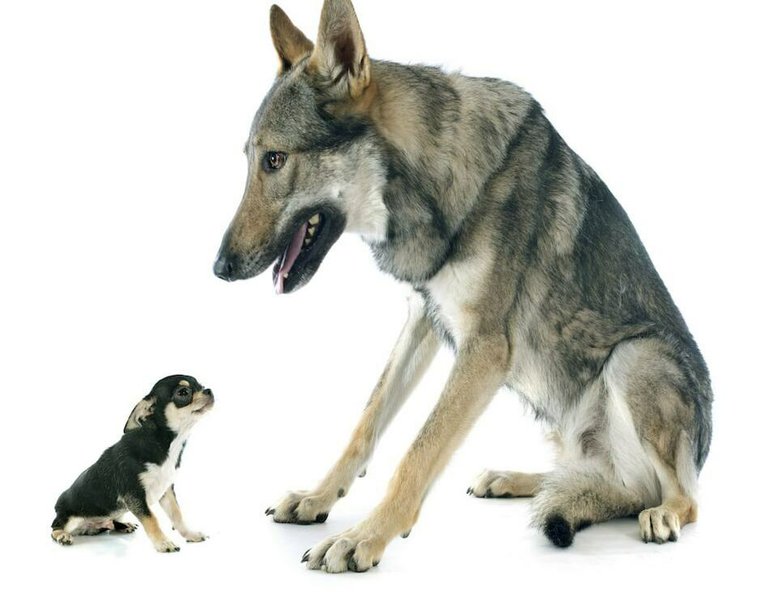Some dogs look like wolves and vice-versa… Well, it’s not surprising since they’re both from the same taxonomy family called Canidae. But even if they share a similar ancestor, these two animals are still very different. And this is what our wolf vs dog comparison is all about!
Wolves and dogs are scientifically defined as separate species, namely canis lupus for wolves and canis familiaris for dogs, although they are both canids. They differ in terms of their physical appearance, body structure, as well as their history. Wolves have a flat top skull that houses more cheek muscles to give them a bite force as strong as 1,500 PSI, whereas a typical dog has a smoother curvature around its head.
Discover how wolves differ from dogs in our list below. Here is everything you need to know about wolf vs dog to understand more about these cool Canids.
21. Taxonomy
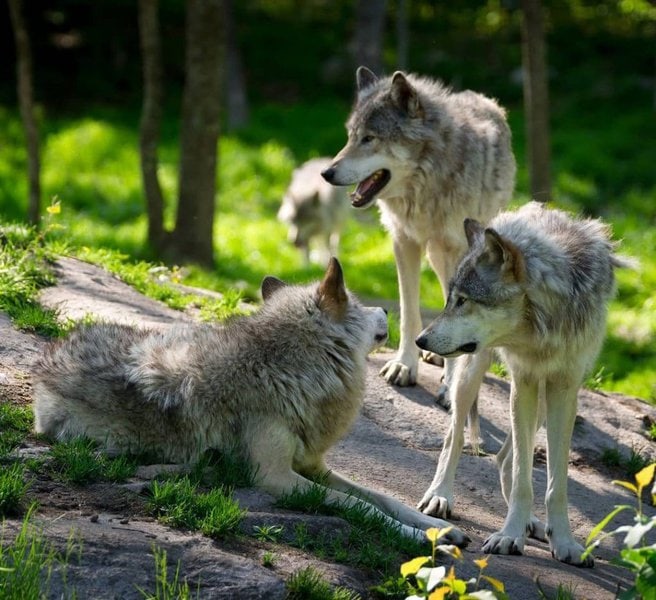
Both wolves and domestic dogs originate from the Canidae family. This taxonomic family also includes jackals, foxes and coyotes.
However, dogs and wolves are from different species. Dogs are from the Canis lupus while wolves are from the Canis familiaris group. With this in mind, they share many differences because they are separate species.
20. Bite Force
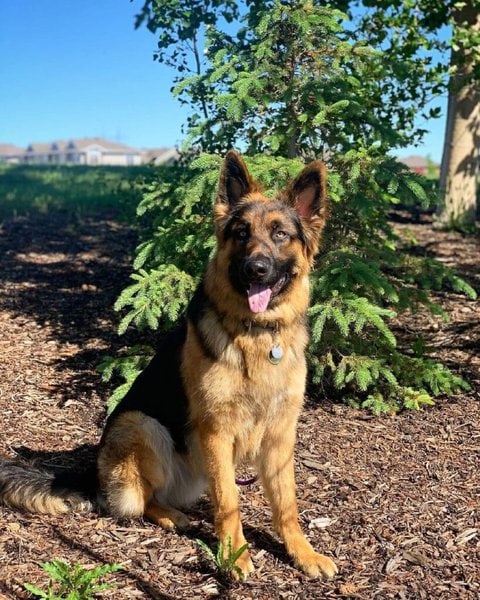
A few dog breeds have an impressive bite force that can go up to 743 PSI such as the Kangal. While this is quite a strong bite force, it is still not as high as what a wolf’s bite force is.
For instance, wolves have a typical bite force of 400 PSI. Yet this is just the very minimum. It can go up to 1,500 PSI in some cases, especially if the wolf is trying to defend or protect itself from a predator.
19. Appearance: Coat Color
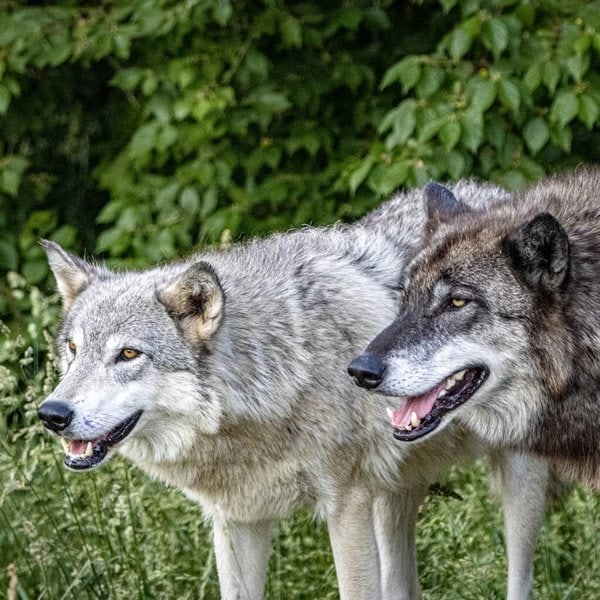
Once again, a dog’s coat color comes in different shades and patterns. There are solid colors such as black, brown, red, and white or patterned ones including brindle, harlequin, and merle, to name a few.
As for wolves, their coat colors are quite limited. They usually come in shades of black, gray, white, and brown. Their colors help them to blend easily in their environment for survival purposes.
18. Appearance: Head Size

Wolves’ heads are disproportionately larger than their bodies. This is why at first glance, a wolf’s head seems to stand out more than its body. Wolves are blessed with big skulls and jaws so as to survive in the harsh conditions of the wild, thus there is no wonder that their heads are disproportionately bigger as a result.
Some dogs have big heads like the mastiffs, but nothing as huge as wolf’s and not as out of proportion either.
17. Appearance: Teeth Size
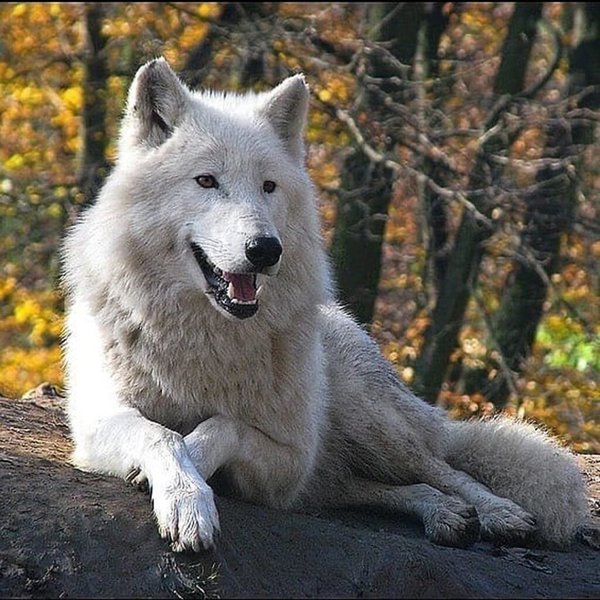
Wolves’ teeth are significantly larger than a canine’s chompers because of wolves’ massive head size. Both animals have 42 teeth, but domesticated dogs’ teeth are smaller and proportional to their smaller head size.
With their life as hunters and scavengers in the wild, wolves have teeth that are capable of tearing down flesh easily. They also use their strong and large teeth to fend off enemies and survive the harsh conditions in the wild.
16. Appearance: Paw Size

Wolves have bigger paws as compared to a dog. This is evident and one does not need to place a wolf’s and a dog’s paw side by side to come to this conclusion.
Wolves have evolved to posses these bigger and stronger paws due to their living environments. They need more strength to rip the bodies of their prey from a successful hunt, as well as to fend off hostile predators for example. This is very much the polar opposite of the domesticated dog species.
A typical canine’s paw measures about 3 inches long, or sometimes a smidge longer, while wolves’ paws are easily double that! If you find a paw print that’s almost the size of your hand, you are most definitely looking at a wolf’s paw print!
15. Appearance: Body Structure
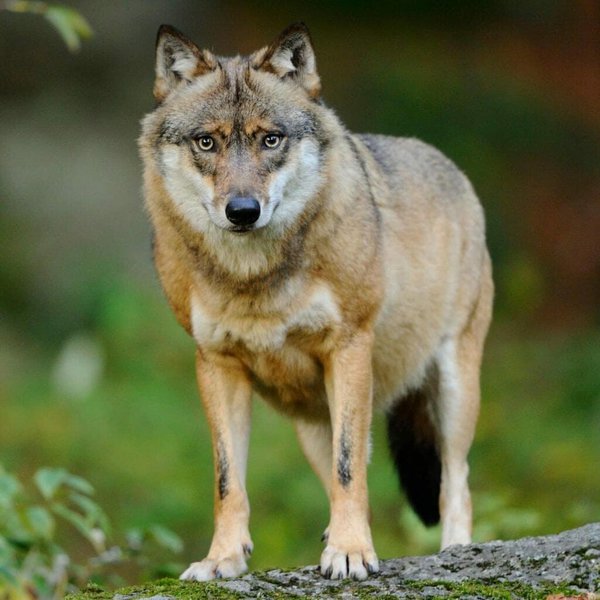
Surprisingly, wolves have a slender and longer body than a dog, although their heads may be bigger. The body frame of a wolf is built to be narrow and lean, giving them the speed and agility advantages during hunts.
Dogs are not as lean as wolves. There are slender dog breeds such as the Rhodesian Ridgeback, Greyhound, and Brittany, but for the most part, wolves have a narrower build than most canines.
14. Diet

Both dogs and wolves can eat meat and plant materials. Yet, for the most part, these animals are true carnivores.
Some canine breeds eat more than others, yet the size of food is still not as big as a wolf’s typical meal size. For instance, wolves can hold as much as 20 lbs of food, while domestic dogs can eat about 11 lbs of food per day.
13. History

Domestication is the outcome of several years of breeding an animal. Dogs are obviously domesticated creatures and live well with humans. In fact, they see their owners as their family.
On the other hand, wolves live in the wild and they are forced to learn and adapt to survive. They are independent species that will never look to us for guidance, affection, and their basic needs. Although wolves can be trained, domesticating them is a remote possibility.
These different environments and years of evolution contribute greatly to the various differences between the wolf and the dog.
12. Endurance
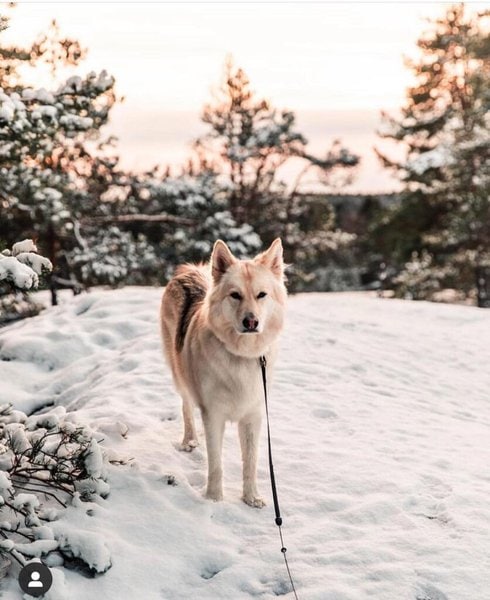
Due to a wolf’s harsh environment, it can scavenge for food for several hours without getting tired. Their endurance and stamina levels are so high, that they can cover over 50 miles each day in search of their meal.
But dogs, although they can be great jogging companions, do not have such excellent endurance levels. They can only travel for about 25 miles in a week. And when it comes to smaller dogs, the stride is even shorter, which takes them longer to get to their destination.
11. Breeding: Litter Size
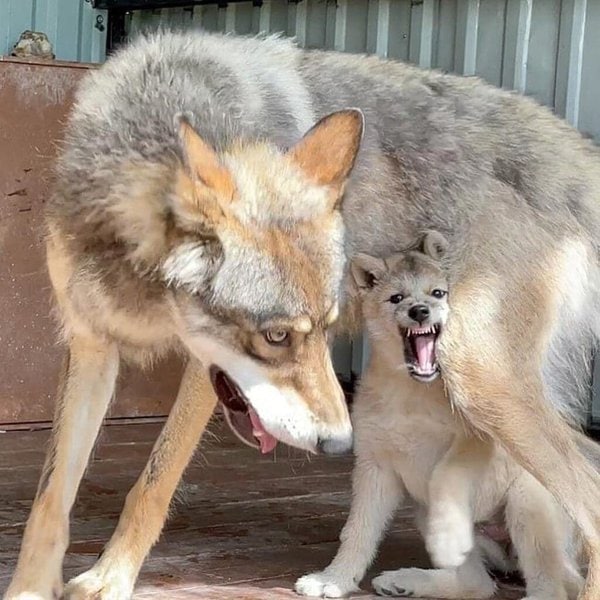
Canines usually breed a few times each year. Their litter size can vary from 5 to 6 pups on average or sometimes even more.
Meanwhile, wolves only breed once per year. The breeding season goes from February to March, and newborn pups come out in April or May. Their litter size is also smaller, usually up to 4 or 5 pups.
10. Living Environment Type
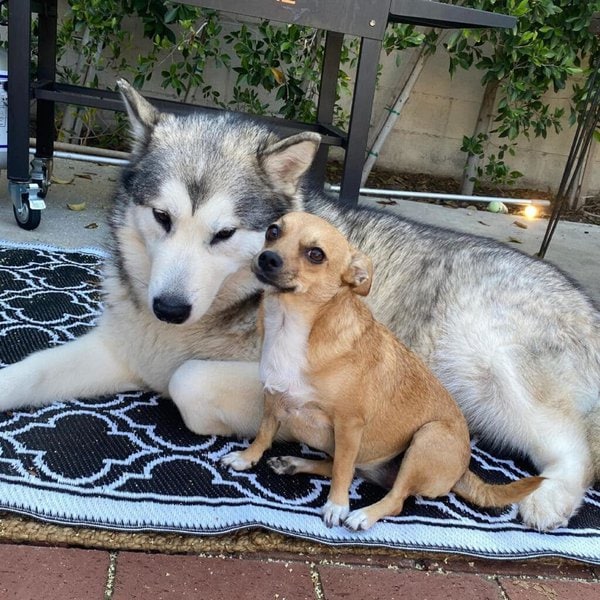
Wolves are versatile and hardy creatures that can survive in various environment types such as woodlands, deserts, grasslands, and tundra. They also have strong hunting and scavenging instincts, and they live best in the wild outdoors.
Canines, however, are better off indoors with daily walks spent outdoors. So while they can occasionally go outdoors during playtime and walks, it is not ideal for them to spend much of their lives outside.
9. Living Environment Spaces
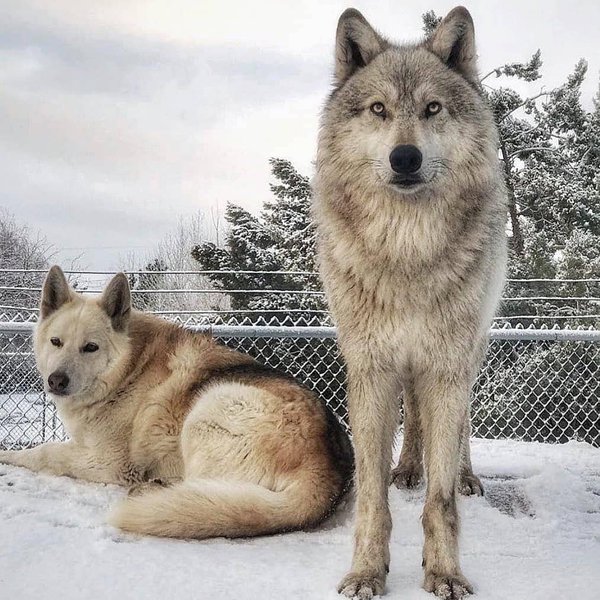
Certain dog breeds are capable of living in an apartment because of their compact size while others are better off in a larger house with a backyard.
However, wolves are never suitable for apartment living. They need a larger space to exercise and roam around, usually somewhere between 6,170 to 9,870 acres.
8. Intelligence

Both dogs and wolves are smart, and there are specific dog breeds that have a higher intelligence level than others. But overall, wolves are smarter than canines.
A wolf’s intelligence enables it to survive in the wild. They are independent and self-reliant creatures that figure things out on their own. Dogs, however, will require more time to solve a puzzle. Several training sessions are also needed for them to learn a new skill or trick.
7. Temperament: Loyalty
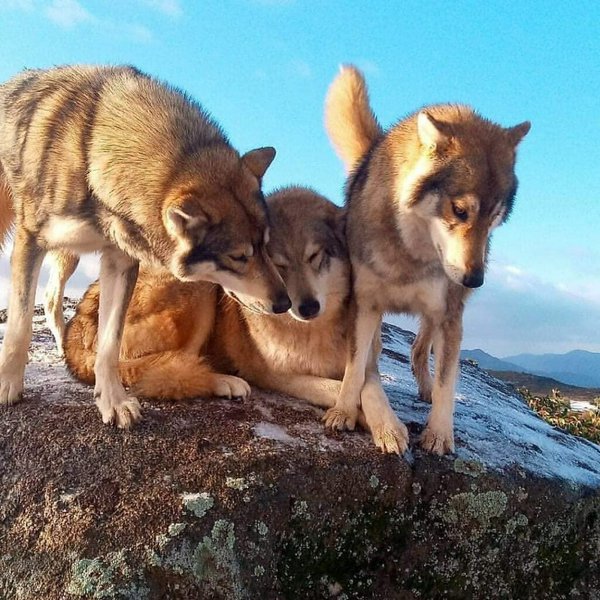
With years of domestication, dogs have acquired a sense of loyalty to their human owners. All canines are generally loyal to their families while others are more loyal to only one person instead of the entire household members.
Since wolves are so independent and are generally wild animals, they do not feel any obligation to please and protect people. Hence, they are not exactly loyal creatures.
6. Temperament: Team Player Personality
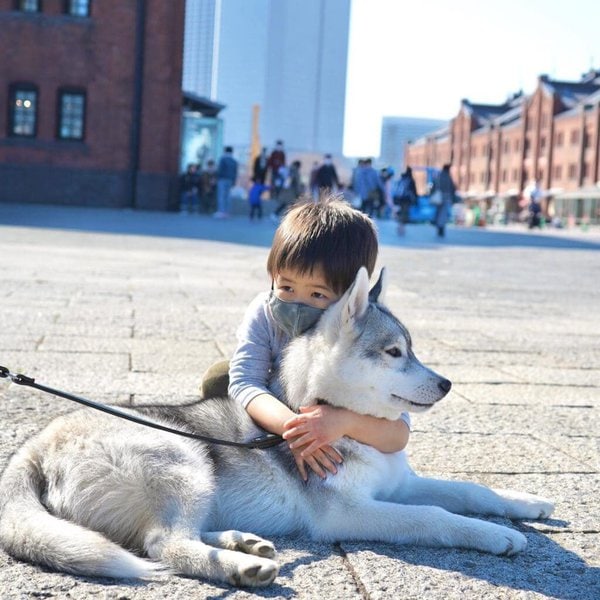
Dogs and wolves are both team players, yet in different ways. For instance, wolves hunt in packs, which means they are good team players and coordinate with members of their pack.
As for dogs, they see their owners as their social circle. They obey their families and please them in any way they can. Canines also depend on their owners for their survival, so they do their best to get along with them.
5. Temperament: Shyness
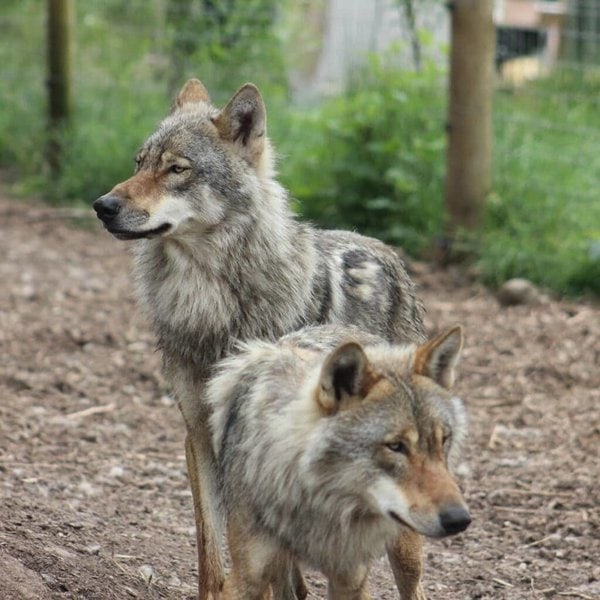
Wolves may be vicious and fearless canids but they are most definitely shy and aloof towards people. They will never approach humans because of their reserved personality.
On the other hand, some dogs may be on the timid side while others can be more outgoing and sociable. All in all, most dogs like to approach people and other canines.
4. Breed-Specific Legislation
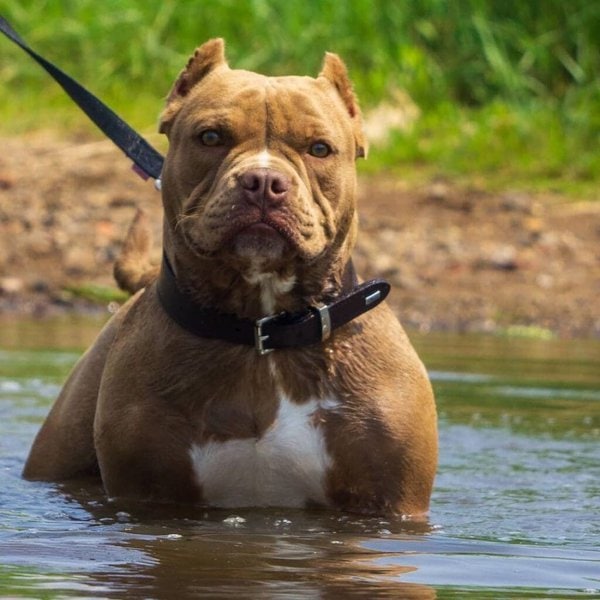
There are certain dog breeds that are impacted by breed-specific legislation (BSL) in certain countries. For instance, regulated breeds such as English Bull Terriers, American Pitbulls, Cane Corso, German Shepherds, and Staffordshire Bull Terriers are affected by such BSL.
A pure wolf is illegal to own as a pet in the United States. However, wolf-dogs that are only 98% wolves may be legal in very few states and cities.
3. Maturity
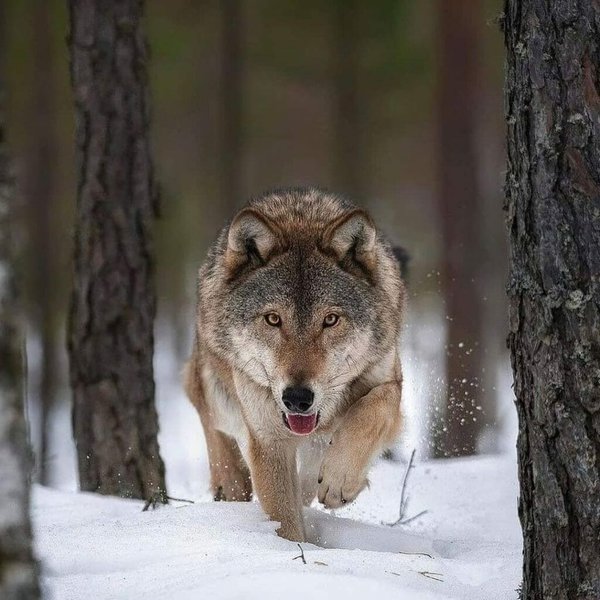
Wolves and pups are generally weaned once they are 8 weeks old. But because one is wild and the other is domesticated, they mature at different rates.
Dogs usually mature at age 2, while wolves begin maturity as early as 6 months of age. Because of a wolf’s tougher living environment, a faster maturity rate enables it to survive well in the wild.
2. Appearance: Weight
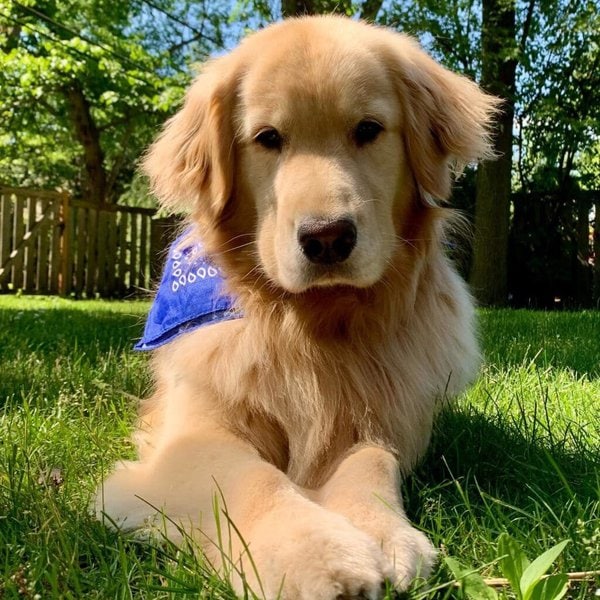
Small, large, and somewhere in between, dogs come in varied sizes. Some dogs can weigh up to 5 lbs while others go up to 150 lbs or so. But the average weight of medium size dogs is between 30 and 50 lbs.
On the other hand, wolves are much heavier. Let’s take a small Gray Wolf, for instance, its minimum weight is already at least 50 lbs. For larger ones, the weight can easily exceed 175 lbs.
1. Appearance: Height
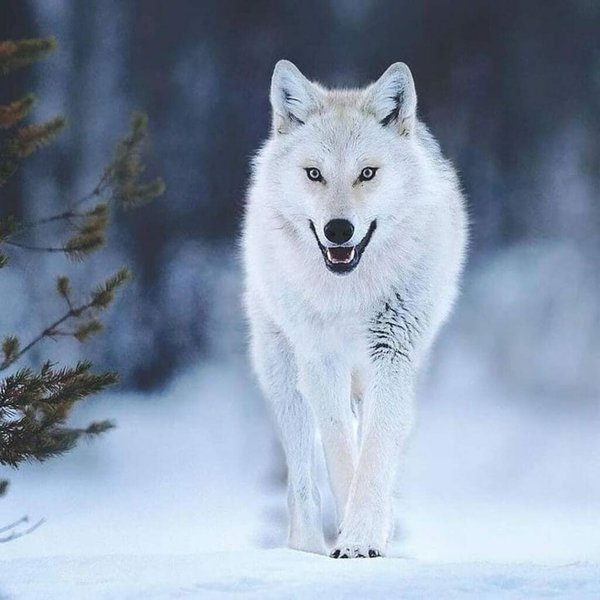
Some dogs are tall and leggy such as the Great Dane and the Greyhound. They can stand as tall as 32 inches at the shoulder and a body length of 3 feet 5 inches.
But wolves are much taller and longer than canines. In fact, the Gray Wolf is the largest of all canids. When fully mature, they can measure up to 6 feet long from their nose to their tail. As for their height, they are usually taller than 32 inches. The Maned Wolf is even taller at 35 inches at the shoulder.
Related Questions
What Dogs Can Kill Wolves? Despite being smaller and lighter than a wolf, some dogs can kill this wild canid. Certain dog breeds that are strong enough to kill wolves include the Kangal, Borzoi, Bully Kita, and Dogo Argentino, to name a few.
What Domestic Dog Is Closest To A Wolf? Wolves and dogs may share differences in appearance and personality but there are some dog breeds that are closest to a wolf. These dog breeds are the Chow Chow, Alaskan Malamute, Akita, and Shiba Inu.
What Percent Of Dog DNA Is Wolf? Dogs and wolves are said to share 99% of their mitochondrial DNA. With this in mind, there is no other animal that is closer to the Gray Wolf than a domesticated dog.

